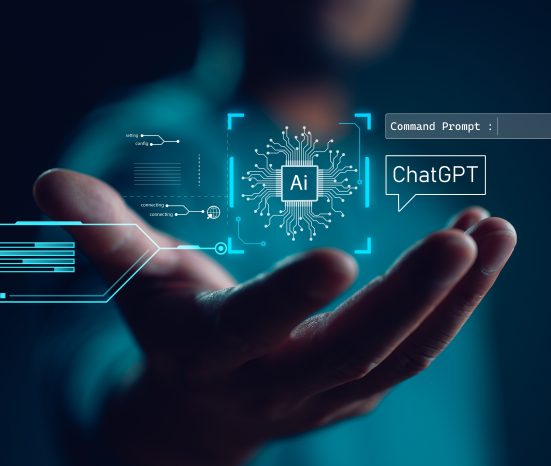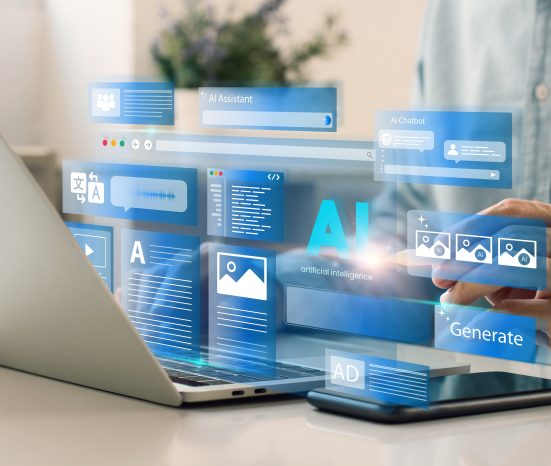AI - Artificial Intelligence
What is Artificial Intelligence?
Artificial Intelligence (AI) refers to technology that enables computers and machines to simulate human intelligence and problem-solving capabilities. Essentially, AI allows computers to learn and solve problems in ways that resemble human thinking. Here are some key points about AI:
Learning and Problem Solving
- AI systems are trained on vast amounts of information and learn to identify patterns within it. They can then carry out tasks that would typically require human intelligence, such as having human-like conversations or predicting online shopper preferences.
Applications of AI
- Virtual Assistants: AI powers voice-controlled virtual assistants like Siri and Alexa.
- Social Media Algorithms: AI helps platforms like Facebook and Twitter (now known as X) decide which posts to show users.
- Recommendation Systems: Amazon uses AI to analyze customer buying habits and recommend future purchases.
- Content Generation: Programs like ChatGPT and Midjourney use generative AI to create text or images that feel human-made.
- Potential for Music and Video Creation: Generative AI can even produce music and videos in the style of famous artists.
Challenges and Concerns
- Bias: AI systems can inherit biases from their training data, leading to inaccurate answers or reproducing harmful stereotypes.
- Ethical Use: Some artists worry that AI could be exploited to imitate their work without proper credit or payment.
- Safety: Experts express concerns about rapid AI development, potential cyberattacks, and the long-term impact of super-intelligent AIs.
In summary, AI is a powerful field that continues to evolve, impacting various aspects of modern life. However, responsible development and ethical considerations are crucial to ensure its positive impact.
Types of AI
Narrow AI (Artificial Narrow Intelligence, ANI)
- Narrow AI refers to AI tools designed for specific tasks or actions. These systems excel in one cognitive capability but cannot independently learn beyond their design. Examples of narrow AI include voice recognition software (like Amazon’s Alexa), recommendation algorithms (such as Netflix’s content suggestions), and chatbots.
Artificial General Intelligence (AGI)
- AGI, also known as general AI or strong AI, aims to replicate human-like intelligence. It can learn, think, and perform a wide range of tasks similarly to humans. The goal is to create machines that act as lifelike, equally intelligent assistants in everyday life. While AGI is still a work in progress, technologies like deep learning, reinforcement learning, and neural networks contribute to its development.
Artificial Superintelligence (ASI)
- ASI is the stuff of science fiction – a theoretical level of AI surpassing human knowledge and capabilities.
Uses of AI in Aerospace
Product Designing
- AI assists in creating economical and robust airplane parts.
- Generative design, combined with AI algorithms, helps engineers generate optimal component designs.
- Iterative design, where constraints like materials, budget, and available resources are considered, benefits from AI-driven programming. It allows designers to explore multiple options efficiently.
Preventative Maintenance
- AI tracks, schedules, and manages maintenance based on historical data and predictive analytics. By identifying patterns, it ensures timely inspections and reduces downtime. For example, AI can predict when specific aircraft components need replacement or maintenance, improving safety and efficiency.
Fuel Efficiency:
- AI optimizes fuel consumption during critical flight phases by analysing recorded data. It identifies areas where fuel usage can be optimized, leading to cost savings and reduced environmental impact.
- During take-off, climb, and descent, AI algorithms adjust engine parameters to achieve optimal fuel efficiency.
In-Flight Assistance and Co-Piloting
- AI systems act as virtual co-pilots, assisting human pilots during flights. They monitor systems, provide real-time feedback, and help manage complex tasks.
- These systems enhance safety by alerting pilots to potential issues and suggesting corrective actions.
Aircraft Testing and Optimization:
- AI analyses data from flight tests, wind tunnel experiments, and simulations. It identifies design improvements, aerodynamic enhancements, and structural optimizations.
- By rapidly processing large volumes of data, AI accelerates the testing and validation process.
Air Traffic Management
- AI helps optimize air traffic flow, reducing congestion and delays. It predicts airspace demand, reroutes flights, and manages traffic efficiently.
- Enhanced air traffic management leads to smoother operations and shorter flight times.
Back-Office Functions
- AI supports business operations, including finance, marketing, and HR. It automates routine tasks, improves decision-making, and enhances overall efficiency. For instance, AI-driven algorithms analyze market trends, predict demand, and optimize pricing strategies for airlines.
Safety Compliance and Post-Flight Inspection
- AI systems analyze flight data, sensor readings, and maintenance records to ensure compliance with safety regulations.
- Post-flight inspections benefit from AI’s ability to process vast amounts of data, identifying any anomalies or issues.
Evolution of Artificial Intelligence

The continued evolution of artificial intelligence (AI) is marked by rapid advancements in machine learning, neural networks, and natural language processing. These developments are enabling AI systems to perform increasingly complex tasks, from understanding human emotions to making autonomous decisions in real-time. As AI technology becomes more sophisticated, its applications are expanding across various industries, enhancing efficiency, innovation, and everyday life. However, this growth also brings challenges related to ethical use, bias, and the need for robust regulatory frameworks.
Aerospace & AI in Future
The relationship between aerospace and artificial intelligence (AI) is set to transform the industry significantly in the future. AI will enhance flight operations through predictive maintenance, optimizing fuel efficiency, and improving air traffic management, leading to safer and more efficient flights. Autonomous flight systems powered by AI will enable advanced navigation and in-flight decision-making, reducing human error and increasing reliability. As AI technology continues to evolve, its integration into aerospace will drive innovation, from unmanned aerial vehicles to smart manufacturing processes in aircraft production.

Frequently Asked Questions
Common questions and answers pertaining to artificial intelligence, especially in regards to aviation.
What is artificial intelligence (AI)?
Artificial intelligence (AI) refers to the simulation of human intelligence in computers and machines, enabling them to perform tasks that typically require human intelligence. These tasks include learning, reasoning, problem-solving, perception, and language understanding.
How is AI used in everyday life?
AI is used in everyday life in various ways, such as voice assistants (e.g., Siri and Alexa), recommendation systems on streaming platforms (e.g., Netflix and Spotify), personalized advertisements, smart home devices, and autonomous vehicles. AI technologies help improve user experience, efficiency, and convenience in daily activities.
What are the different types of AI?
AI is commonly categorized into three types: Narrow AI (or Weak AI), which is designed to perform a specific task (e.g., image recognition); General AI (or Strong AI), which aims to possess human-like intelligence across a wide range of tasks (still theoretical); and Superintelligent AI, which would surpass human intelligence in all aspects (a concept mostly discussed in speculative scenarios).
What are the ethical concerns related to AI?
Ethical concerns related to AI include bias and fairness, where AI systems may perpetuate or amplify societal biases present in their training data; privacy issues, as AI often requires large amounts of data; job displacement, with automation potentially leading to unemployment in certain sectors; and the need for transparency and accountability in AI decision-making processes.
How does AI impact various industries?
AI impacts various industries by enhancing productivity and innovation. In healthcare, AI aids in diagnostics and personalized treatment plans. In finance, it improves fraud detection and trading strategies. In manufacturing, AI optimizes supply chains and automates quality control. In transportation, it enhances route planning and enables autonomous driving. AI is also revolutionizing customer service, marketing, and entertainment by providing personalized experiences and insights.
Video Explanation
The video below will provide more information as to how this technology works
Example Industry User

AtkinsRéalis is incorporating artificial intelligence (AI) to enhance their engineering and design solutions. AI helps AtkinsRéalis in optimizing infrastructure projects by providing advanced data analytics, predictive modeling, and automation of routine tasks. This integration allows for more efficient project management, reduced costs, and improved decision-making processes. By leveraging AI, AtkinsRéalis is able to deliver innovative and sustainable solutions across various sectors, including transportation, energy, and the built environment.
Further Resources
Below are some links to further reading material.


